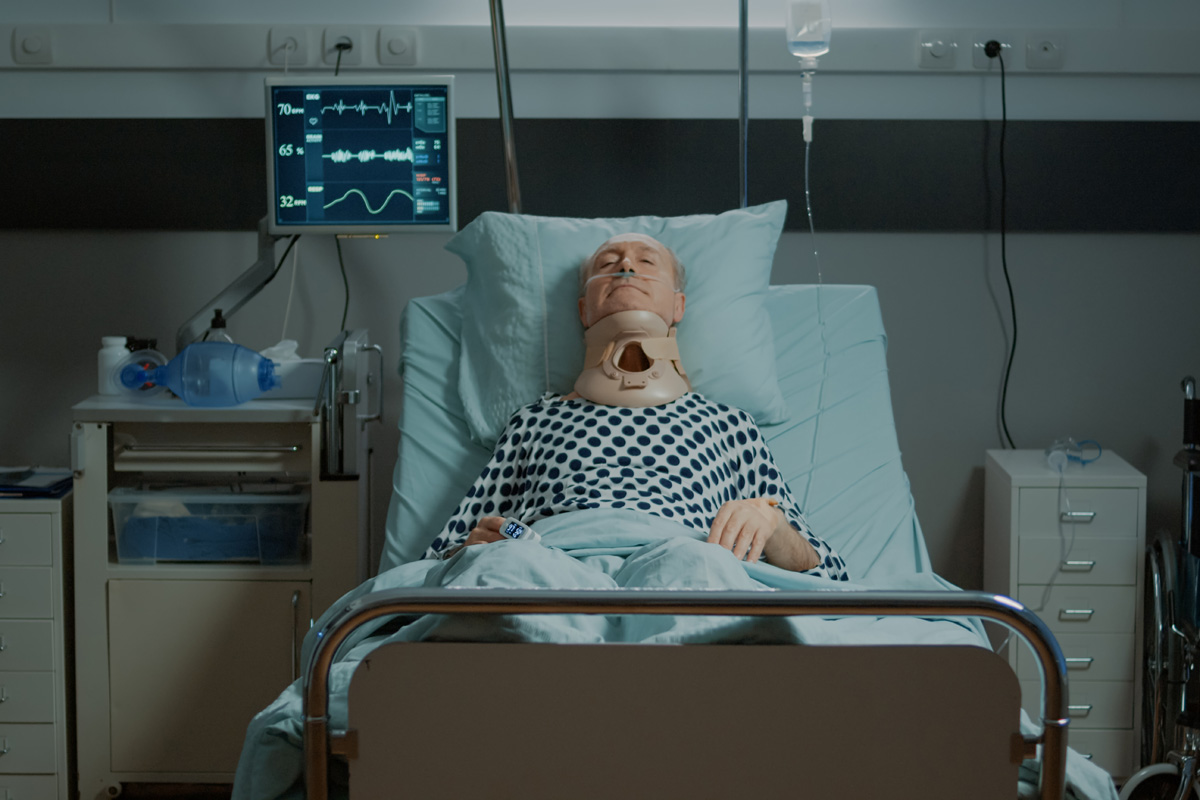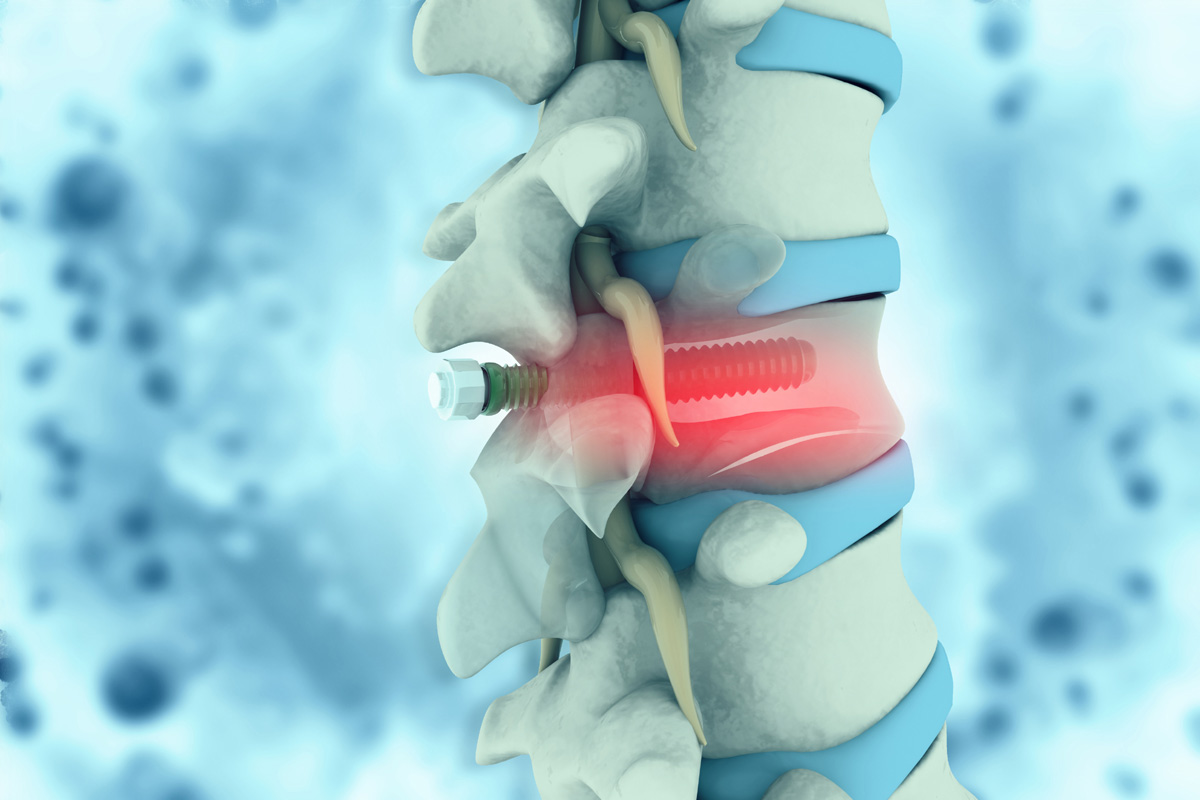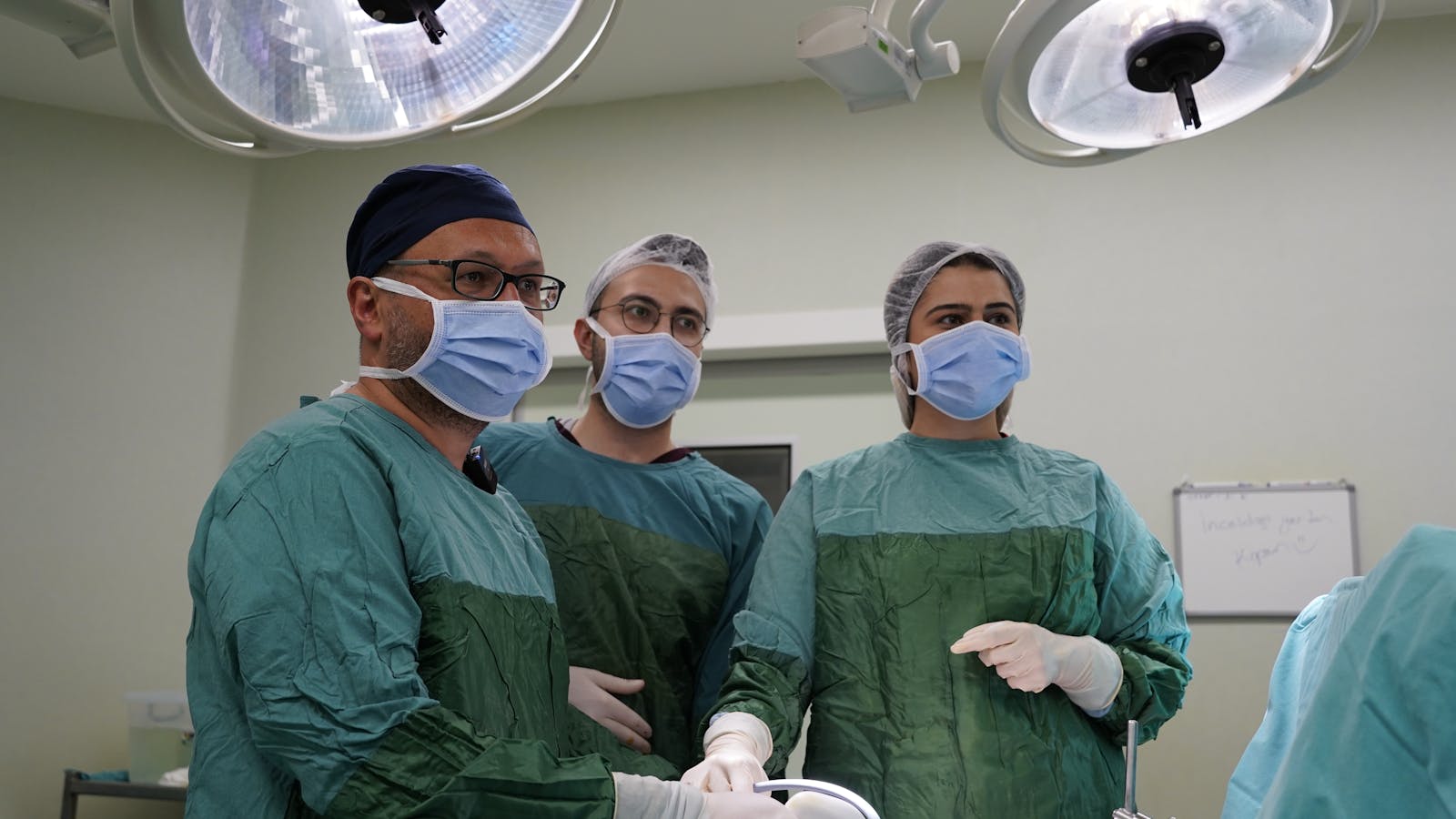In discussions surrounding neck surgery, Anterior Cervical Discectomy and Fusion (ACDF) is frequently mentioned as the most prevalent procedure. This operation, aimed at mitigating spinal cord or nerve root pressure by excising a damaged disc and fusing adjacent vertebrae, is typically employed for conditions such as herniated discs or cervical spine degeneration. Although ACDF can greatly alleviate neck pain and neurological symptoms, it is not without its potential risks and limitations. With this in mind, might there be more to ponder in the domain of neck surgeries? Let’s explore further.
Understanding Neck Anatomy
To fully comprehend the intricacies of neck surgery, it is essential to first develop a thorough understanding of the complex anatomy of the neck. The neck, or cervical region, is a coordinated network of nerves, bones, joints, and muscles directed by the spinal cord and the brain. It is designed for strength, stability, and nerve communication.
Crucial to this design is the role of the neck muscles. The Neck Muscle Function is crucial in providing the necessary support and movement for the head. This complex system of muscles not only allows for a wide range of motion but also helps maintain the alignment of the cervical spine.
The Spinal Cord Anatomy is another significant aspect of neck anatomy. The spinal cord, protected by the cervical vertebrae, serves as a conduit for nerve signals between the brain and the rest of the body. Any damage or disorder in this area can lead to significant neurological problems.
Causes of Chronic Neck Pain
Chronic neck pain, a fundamental issue that impacts quality of life, can be attributed to a variety of factors. Before we explore different treatment options for this condition, it is essential to understand what triggers chronic neck pain. These triggers, which range from poor posture to underlying medical conditions, will be examined in depth in the following discussion.
Identifying Chronic Neck Pain
Understanding the underlying causes of chronic neck pain can be complex, as it often stems from a multitude of factors ranging from postural issues to severe medical conditions. The key to accurately identifying chronic neck pain lies in the implementation of effective pain assessment techniques. These may include physical examinations, reviewing medical histories, and conducting diagnostic tests. The aim is to detect any abnormalities, inflammation, or injury which might be causing the neck pain. Simultaneously, emphasis should be placed on neck strain prevention, as this is a common cause of chronic neck pain. Preventative measures may involve maintaining proper posture, especially during prolonged periods of sitting or standing, and incorporating regular neck exercises into daily routines.
Common Chronic Pain Triggers
In the domain of chronic neck pain, a variety of triggers can exacerbate discomfort and disrupt daily activities, making it important to identify and manage these factors effectively. Pain perception variations are one such trigger, with some individuals experiencing heightened sensitivity to pain due to genetic predispositions, past injuries, or neurological conditions. This can cause a minor strain or sprain to escalate into chronic pain. Stress induced discomfort is another common trigger. The body’s physiological response to stress can lead to muscle tension in the neck, potentially resulting in persistent pain if not promptly addressed. Other triggers can include poor posture, obesity, and lack of physical activity, all of which can strain the neck and contribute to chronic pain.
Treatment Options Explored
While effectively managing triggers can help alleviate some discomfort, it is often necessary to explore a variety of treatment options to address the underlying causes of chronic neck pain. Physical therapy, medication, and lifestyle changes often serve as first-line treatments. However, for more severe cases that don’t respond to conservative measures, surgery may be necessary. The decision to proceed with surgical intervention is typically made after considering multiple factors such as the patient’s overall health, the severity of the symptoms, and the potential surgery costs. It is important to understand that insurance coverage varies widely, and not all procedures may be covered. Discuss these factors with your healthcare provider to make an informed decision about your treatment plan.
Non-Surgical Neck Pain Treatments
While surgical intervention remains a common solution for chronic neck pain, it is important to explore non-surgical options that may provide relief. These alternatives include methods such as physical therapy, use of over-the-counter pain relievers, and lifestyle modifications. Each of these strategies can be effective in mitigating neck pain, and may be suitable for patients seeking non-invasive treatments.
Physical Therapy Techniques
Physical therapy techniques offer a non-surgical approach to treating neck pain, employing a variety of methods to enhance mobility, reduce discomfort, and restore normal function. Manual Mobilization, a key technique, involves skilled hand movements by therapists to modulate pain and reduce soft-tissue inflammation. It optimizes movement through stimulation of the joint’s receptors, promoting natural healing and function.
Another technique, Dry Needling, involves inserting thin needles into trigger points in the neck muscles, thereby releasing tension, decreasing pain, and improving mobility. It’s typically used when neck pain persists despite other conservative management techniques. Through these physical therapy techniques, patients can often avoid more invasive procedures, fostering a healthier, less painful lifestyle. These methods underscore the importance of non-surgical options in the treatment of neck pain.
Over-the-counter Pain Relievers
In addition to physical therapy, a vast majority of individuals suffering from neck pain often turn to over-the-counter pain relievers as a non-surgical treatment method. These medications, such as ibuprofen and acetaminophen, can provide significant relief from acute or chronic discomfort. However, it is important to understand the potential pain reliever side effects and overdose risks associated with these drugs. Side effects may include stomach upset, liver damage, kidney problems, or increased heart attack or stroke risks. An overdose can lead to severe health problems, including liver failure or even death. It is highly recommended to follow the prescribed dosage instructions and consult a healthcare provider if pain persists. Remember, these are temporary solutions, not a cure for the underlying issue.
Lifestyle Modification Suggestions
Beyond over-the-counter medications, lifestyle changes can serve as an effective non-surgical treatment approach for managing neck pain. Dietary impacts are important: a diet rich in anti-inflammatory foods like fruits, vegetables, lean meats, and whole grains can help reduce neck pain. In contrast, processed foods and sugary beverages can worsen inflammation and discomfort.
Additionally, adopting proper sleep positions can greatly alleviate neck pain. Best positions, such as sleeping on your back with a pillow that supports the natural curvature of your neck, can prevent strain and promote healing. Avoiding stomach sleeping, which twists the neck, can also prevent unnecessary pain. These simple yet impactful lifestyle modifications are vital components of a thorough, non-surgical neck pain management strategy.
When Is Neck Surgery Necessary?
Determining the necessity for neck surgery hinges on several critical factors, including the severity and duration of symptoms, the nature of the underlying condition, and the patient’s overall health. Before considering surgery, physicians typically exhaust all conservative treatment options, such as physical therapy, medication, and other surgery alternatives. These methods aim to reduce discomfort and improve function, emphasizing pain management.
However, there are situations when neck surgery becomes necessary:
- Persistent Pain: Despite utilizing non-surgical treatments, the patient continues to experience severe neck pain that inhibits daily activities.
- Neurological Symptoms: The presence of neurological symptoms such as numbness, weakness, or tingling sensations in the arms or hands often necessitates surgical intervention.
- Progressive Spinal Disorders: Conditions like spinal stenosis, herniated discs, or cervical deformity may require surgery if they progressively worsen or fail to improve with conservative treatment.
- Trauma: In cases of severe neck injury, surgery may be necessary to stabilize the cervical spine and prevent further damage.
Overview of Common Neck Surgeries
In the domain of neck surgeries, there exist a variety of types, each with its unique purpose, procedure, and prognosis. It is important to understand not only these diverse surgical options, but also the associated risks and the often intricate journey of recovery. This discussion will provide a detailed overview of the most common neck surgeries, encompassing the aforementioned aspects, to equip readers with essential knowledge in this medical field.
Types of Neck Surgeries
Delving into the field of neck surgeries, there are several common procedures employed by medical professionals to address various conditions and ailments. These surgeries can correct posture, debunk common neck surgery myths, and provide relief to patients.
- Cervical Discectomy: A surgical procedure to remove part of the intervertebral disc that is causing neck pain or other neurologic symptoms.
- Cervical Fusion: This surgery is performed to permanently connect two or more vertebrae in the neck.
- Cervical Disc Replacement: This involves replacing a damaged or degenerated cervical disc with an artificial disc device.
- Laminoplasty: A procedure that creates more space for the spinal cord and nerve roots to relieve neck pain.
Each surgery has its own purpose, benefits, and potential complications, making the choice highly individualized.
Risks and Recovery
While understanding the different types of neck surgeries is important, it is equally vital to acknowledge the potential risks involved and the recovery process that follows these procedures. Risks vary based on the specific surgery but can include infection, nerve damage, and complications from anesthesia. Surgical costs can be significant, but insurance coverage often helps defray a substantial portion of these expenses. It’s essential to discuss these financial aspects with your healthcare provider beforehand. Post-operation, patients may experience pain and limited mobility, necessitating physical therapy or rehabilitation. The recovery period can last from weeks to months, depending on the surgery and the individual’s health. Adequate rest, proper nutrition, and adherence to medical advice are all critical for successful recovery.
Anterior Cervical Discectomy and Fusion (ACDF)
Surgeons perform Anterior Cervical Discectomy and Fusion (ACDF) to relieve spinal cord or nerve root pressure by removing a damaged disc in the neck. This procedure, while common, is not without potential complications and effects on post-operative mobility.
ACDF complications can range from minor to severe, and may include:
- Infection or bleeding at the site of the surgery.
- Difficulty swallowing or hoarseness due to damage to the esophagus or laryngeal nerve.
- Hardware fracture or graft migration, which may require additional surgery.
- Persistent pain or numbness, indicating that the procedure may not have fully alleviated the pressure on the spinal cord or nerve roots.
Regarding post-operative mobility, patients typically experience an initial period of restricted movement as they recover from the surgery. Physical therapy is often recommended to help regain strength and flexibility in the neck. Importantly, while ACDF can greatly improve quality of life for many patients, it is not a guaranteed cure for all neck pain or mobility issues. Patients should discuss their individual risks and potential benefits with their surgeon before deciding on ACDF as a treatment option.
Cervical Disc Replacement Surgery
Another common practice in the world of neck surgeries is the Cervical Disc Replacement Surgery, a sophisticated operation designed to treat neck pain associated with degenerative disc disease. This procedure involves the removal of a diseased or damaged disc and replacing it with an artificial one, aiming to restore natural spine motion and alignment, thereby alleviating pain.
Despite the surgery’s potential benefits, it’s important to take into account possible post-surgery complications, which can include infection, bleeding, nerve damage, and issues related to the artificial disc itself, such as migration or dislocation. Additionally, some patients may experience persistent neck pain or require additional surgeries.
When discussing neck surgery alternatives, it’s vital to highlight conservative treatments such as physical therapy, medication management, and lifestyle modifications. These non-surgical methods can often successfully manage symptoms associated with degenerative disc disease.
However, in more severe cases where conservative treatments are ineffective, other surgical interventions like Anterior Cervical Discectomy and Fusion (ACDF) may be considered. Ultimately, the choice between Cervical Disc Replacement Surgery and its alternatives should be a collaborative decision between the patient and their healthcare provider, taking into account the severity of the disease, potential risks and benefits, and the patient’s personal circumstances and preferences.
Posterior Cervical Laminectomy
Exploring the domain of neck surgeries, Posterior Cervical Laminectomy emerges as a significant procedure, specifically designed to alleviate neck pain and discomfort caused by nerve compression. The surgical intervention involves the removal of the lamina, the back part of the vertebra that covers the spinal canal. This process expands the spinal canal, reducing pressure on the spinal cord or the nerve roots, providing relief from symptoms like pain, weakness, or numbness.
Despite its importance, it’s essential to understand potential laminectomy complications:
- Potential nerve damage or nerve root injury
- Infection at the surgical site or meningitis
- Spinal fluid leakage, causing headaches or other complications
- Instability in the spinal column post-surgery, requiring additional treatment
Given these risks, exploring surgical alternatives is necessary. Less invasive methods, like foraminotomy or discectomy, may be considered in certain cases. Ultimately, the choice of procedure will depend on the patient’s individual health condition, the severity of the symptoms, and the surgeon’s assessment. The aim is to achieve the best possible outcome, minimizing discomfort, and maximizing quality of life post-surgery.
Cervical Spinal Fusion Surgery
While Posterior Cervical Laminectomy focuses on alleviating nerve compression, an alternative surgical procedure known as Cervical Spinal Fusion Surgery is often employed to address issues related to spinal instability. This particular surgery involves the fusing of two or more cervical vertebrae to increase stability, reduce pain, and correct spinal deformities.
The surgery cost for Cervical Spinal Fusion can be quite high, with estimates suggesting an average cost in the range of $14,000 to $27,000. These costs include hospital stay, surgical team fees, anesthesia, and hardware like screws and plates, among other things. However, the overall expense can vary based on geographical location, hospital, surgeon’s expertise, and the patient’s health condition.
Despite its high cost, this surgery is often considered the best long-term solution for severe spinal instability. However, there are fusion alternatives available for those who cannot afford the surgery or are not deemed suitable candidates. These alternatives might include physical therapy, pain management, and minimally invasive surgical techniques. Such options may offer temporary relief, although they may not be as effective in dealing with severe cases of spinal instability. Therefore, it is important for patients to discuss all potential options with their healthcare provider.
Risks and Complications of Neck Surgery
Exploring the intricacies of neck surgery, it is essential to take into account the potential risks and complications that may arise, which can greatly affect a patient’s recovery and overall health. Despite the advancements in surgical techniques and post-operative care, a variety of complications can still occur.
These encompass:
– Adverse reaction to surgery anesthesia: This might include allergies, breathing problems, or adverse effects on the heart.
– Bleeding: While bleeding is controlled during surgery, excessive bleeding can potentially lead to serious complications.
– Nerve injury: The neck area is densely populated with nerves. Accidental damage can cause temporary or permanent complications.
– Post-operative infections: Despite stringent sterile procedures, infections can occur, potentially leading to extended hospital stays and further treatment.
Each of these complications presents significant challenges and may prolong the recovery period, or in some instances, lead to long-term health issues. However, the likelihood of these risks is often low, thanks to modern surgical techniques and diligent pre-operative planning. Nevertheless, it is vital for patients to be aware of these potential complications when considering neck surgery.
Post-Surgery Care and Rehabilitation
After the completion of neck surgery, meticulous post-operative care and thorough rehabilitation plans play an important role in ensuring excellent recovery and restoring the patient’s functionality. This process is multifaceted, involving wound care, pain management, physical therapy, and patient education.
Wound care is essential to prevent infection and promote healing. Cleanliness of the surgical site and careful monitoring for signs of infection, such as redness, swelling, or discharge, are key. Over-the-counter or prescribed pain medication is often used for pain management, alleviating discomfort and enabling participation in rehabilitation activities.
Physical therapy is an integral part of rehabilitation, aiming to restore strength and mobility. Tailored exercises will help improve neck flexibility, reduce stiffness, and enhance muscle function. It’s important to perform these exercises under professional supervision initially to ensure correct technique.
Patient education involves understanding the recovery process, recognizing potential complications, and knowing when to seek medical attention. It also includes lifestyle modifications, like adopting a healthier diet and quitting smoking to facilitate healing and prevent further neck issues.
Post-operative care and rehabilitation require patience and commitment but are essential for excellent recovery after neck surgery.
Alternative Treatments to Surgery
Despite the effectiveness of surgical intervention, there are several non-surgical alternatives available for treating neck conditions that should be considered before resorting to invasive procedures. These treatments aim to alleviate pain, enhance mobility, and improve quality of life, without the associated risks of surgery. They include the following:
- Physical Therapy: A certified physical therapist will guide patients through a series of exercises and stretches to improve strength and flexibility, and reduce neck pain.
- Acupuncture: The acupuncture benefits are numerous. It can help manage pain and inflammation by stimulating specific points on the body, promoting natural healing.
- Chiropractic Care: Chiropractors use hands-on spinal manipulation and other alternative treatments to maintain the body’s musculoskeletal structure, particularly the spine, is in proper alignment.
- Herbal Remedies: Herbal remedies such as turmeric and willow bark have anti-inflammatory properties that can help manage neck pain. Other natural supplements like glucosamine and chondroitin are believed to improve joint health.
Frequently Asked Questions
What Is the Average Recovery Time for Common Neck Surgeries?
The average recovery time for typical neck surgeries varies, but it generally spans from several weeks to a few months. This period comprises post-surgery mobility improvement and application of various rehabilitation techniques for best recovery.
Does Health Insurance Typically Cover the Cost of Neck Surgery?
Health insurance typically covers neck surgery, subject to policy details. However, insurance loopholes may exist, potentially leading to out-of-pocket expenses. It’s important to thoroughly understand your policy and consult with your insurer before surgery.
How Can I Manage Pain After Neck Surgery Without Medication?
Pain post neck surgery can be managed without medication through alternative therapies such as acupuncture, massage, and heat therapy. Additionally, guided post-operative exercises can greatly aid in reducing discomfort and speeding recovery.
Do Neck Surgeries Affect Vocal Quality or Ability to Swallow?
Neck surgeries can potentially impact vocal quality and swallowing ability, depending on the specific procedure and individual patient factors. Voice rehabilitation and swallowing exercises are often recommended to help restore normal function post-surgery.
Are There Any Dietary Restrictions Before or After Undergoing Neck Surgery?
Pre-surgery nutrition is essential, and typically, patients are asked to fast. Post-surgery hydration aids recovery, though some dietary modifications may be required depending on the nature and extent of the neck surgery performed.



